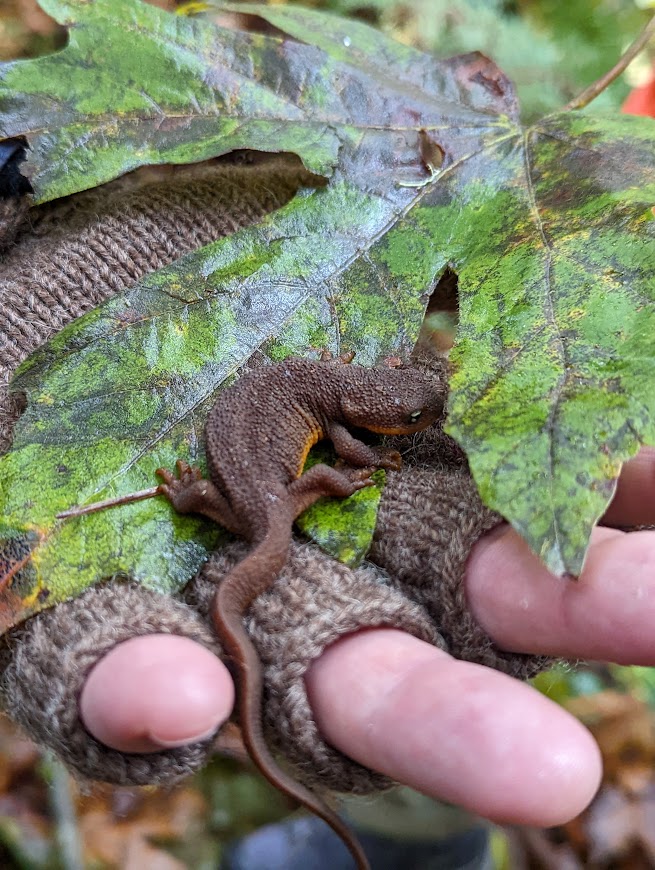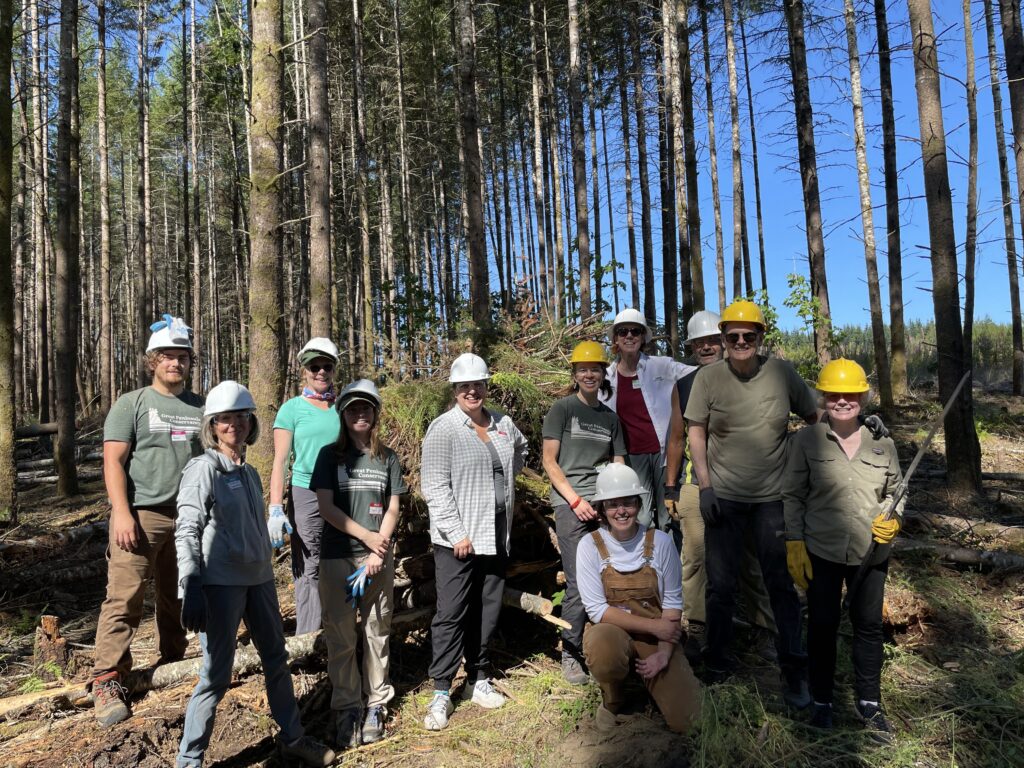One of the exciting things about Great Peninsula Conservancy’s environmental education program Land Labs is that our preserves are ideal classrooms! Land Labs regularly visits Grovers Creek Preserve and will be bringing local students there for fields trips this fall. While staff were visiting the preserve to prepare for the upcoming programing, they kept encountering some of the amphibians that call this forest preserve home!
The first species we came across was a long-toed salamander! They are one of the most widespread salamander species in Washington and are well named; one key identifying feature is the fourth extra long toe on the hind legs. These salamanders have dark bodies with dorsal stripes that come in shades of yellow or green. It’s no surprise to find long-toed salamanders at Grovers Creek Preserve, conifer forests are one of their preferred habitats, and the preserve’s wetlands provide places for them to breed. Next March and April adult salamanders will leave the places they’ve hibernated (under logs or other materials), and head back to the wetlands, nurseries for their eggs and young. The emerging larvae, also called tadpoles, will not undergo metamorphosis into their adult form until summer or fall of their first year.
Staff also found another common Washington species, the Rough-skinned Newt. GPC Executive Director Nathan Daniel was rummaging amongst the underbrush and found the specimen pictured below in his palm! These stocky, brown salamanders have a bright orange belly. In response to threats rough-skinned newts arch their head towards their tail, flashing this bright belly, a behavior called their “unken reflex.” This warns potential predators that they are toxic and would make a poor meal. For this reason, this salamander species is one of the few salamanders that is highly active during the day as well as night. Their main predator is the common garter snake, which is able to eat them despite the toxicity. These flashy salamanders are active year round and prefer very wet habitats, such as the various wetlands found on Grovers Creek Preserve.


Finding these species is certainly fun, but they also are important indicators for the habitat quality at Grovers Creek Preserve. Knowing that salamanders are using the forests and wetlands is important information for developing management plans to promote wildlife habitat. Salamanders require access to water as tadpoles, but then as adults require forests with lots of downed, decaying logs in order to find shelter and food. A majority of forest at Grovers Creek Preserve is relatively young, new growth and the GPC Stewardship team is actively managing the site to support habitat for a wider range of species, as well as climate resiliency. You might have heard about our Habitat Pile Work Parties: GPC Stewardship staff and volunteers have been busy creating habitat for wildlife like these salamanders! You can learn more about how wildlife species are being supported at Grovers Creek Preserve here.
Amphibians such as the Long-toed Salamander and Rough-skinned Newt are among many species that call GPC preserves home and are a reminder of why conservation is so important to their continued survival.
If you or someone you know is interested in volunteering with Land Labs and supporting student exploration of Grovers Creek Preserve, sign up for our upcoming Volunteer Educator Training in November or to be notified of future volunteer opportunities using the link below. No experience is needed!

